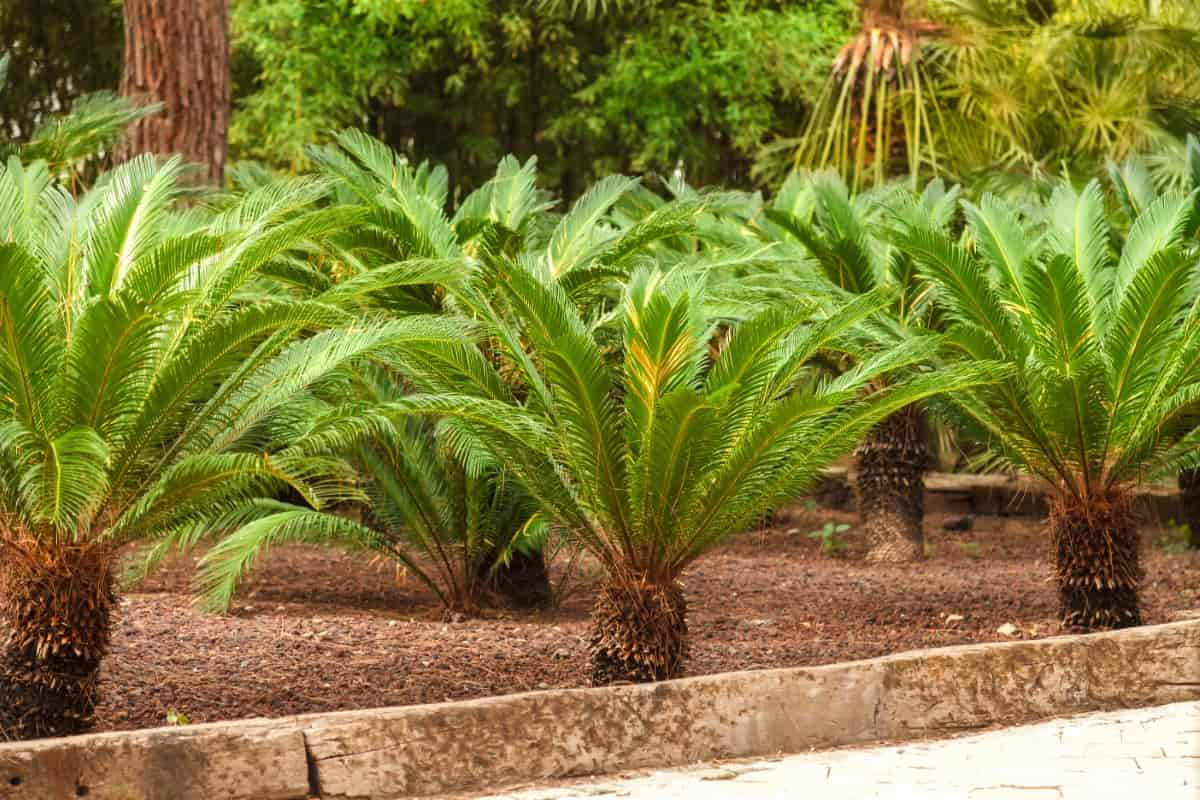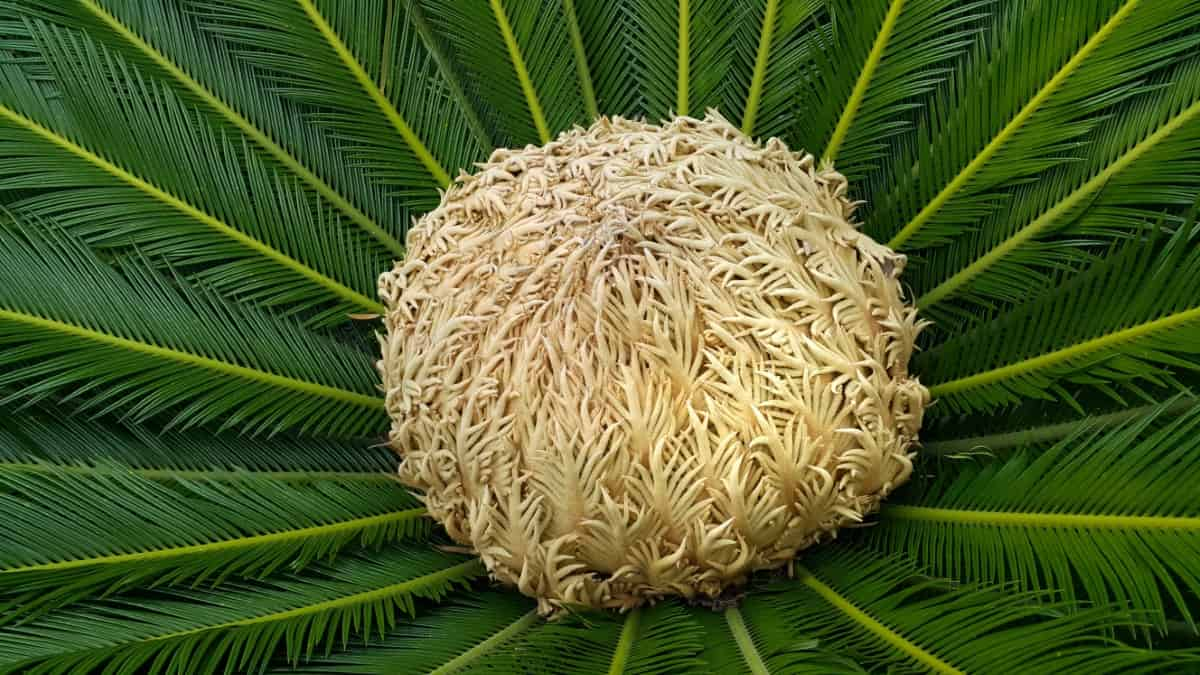Sago Palms are striking plants that can transform any space into a tropical paradise. These plants, not truly palms but cycads, boast deep green, feather-like foliage and a strong trunk that brings an exotic aesthetic to indoor and outdoor settings. In this article, we will navigate through the steps needed to ensure the healthy growth and longevity of your Sago Palm, from selecting the best soil to protecting the plant from harsh weather conditions.

How to Grow and Care for Sago Palm
Best Soil for Sago Palm Growth
Regarding the optimal growth of Sago Palm, the choice of soil is a significant factor. These plants are not picky about the soil they grow in but prefer a well-draining mix. A combination of general potting soil mixed with a small portion of sand or perlite helps prevent water-logging and promotes aeration, which is vital for healthy root growth. The soil should also be slightly acidic, which mimics the Sago Palm’s natural habitat. Regularly checking the soil pH level will help ensure it stays in the 5.5-6.5 range that Sago Palms prefer.
Sunlight Requirements for Sago Palm
Sago Palms thrive in bright, indirect sunlight. Although they can tolerate direct sunlight, intense and constant exposure can cause the leaves to turn yellow or brown. Therefore, if you are growing your Sago Palm indoors, ensure it is placed near a well-lit window but not directly under the sun’s rays. Select a site for outdoor planting that provides a balance of sunlight and shade.
Step-By-Step Guide to Growing Sago Palm Indoors
- Select Suitable Pot: Opt for a pot with sufficient drainage openings. The pot’s size should correspond to the Sago Palm’s size, usually just surpassing the root ball’s dimensions.
- Soil Preparation: Combine standard potting soil with either sand or perlite to facilitate adequate drainage.
- Plantation: Situate the Sago Palm in the pot and envelope the roots with the soil blend. The trunk base should align with the soil surface.
- Position: Choose a bright location away from direct sunlight to place your Sago Palm.
Watering Schedule for Healthy Sago Palm
The watering guidelines for Sago Palm are simple. The standard practice is to hydrate the plant only once the top inch of the soil has dried out. Overhydration can result in root decay, posing a significant risk to your Sago Palm. Ensure the pot facilitates efficient drainage and avoid allowing the plant to remain in stagnant water. During colder periods or winter, decrease watering due to reduced plant growth.
How to Propagate Sago Palm From Pups
Sago Palm can be propagated using its pups or offsets, which are miniature versions of the parent plant that grow at its base. To do this, remove the pup with a sharp, clean knife, taking care to include some roots. Let the pup dry for a week before planting it in a well-draining soil mix. Keep the soil moist but not waterlogged, and place the pup in a well-lit area away from direct sunlight.
Pruning and Trimming Sago Palm Leaves
Pruning your Sago Palm is an easy task. Simply remove the yellow or brown leaves by cutting them close to the trunk. Trimming the lower leaves can also help give the plant a more tree-like appearance. Always use clean, sharp shears to avoid disease transfer.
In case you missed it: Plants That Grow on Fences: Covering Chain Link Fences With Vines/Creepers for Privacy and Beauty

Preventing and Treating Common Sago Palm Diseases
Sago Palms are generally robust and resistant to diseases. However, they can occasionally fall prey to issues like scale and root rot. Scale insects can be spotted as small bumps on the plant’s leaves and treated using a horticultural oil spray. Root rot, usually due to overwatering, requires the plant to be repotted in fresh, well-draining soil and a reduction in watering. Regular inspection of your Sago Palm can help detect problems early, allowing immediate action and preventing more significant issues later.
Fertilizing Sago Palm for Optimal Growth
While Sago Palms are not heavy feeders, they do appreciate a little boost from time to time. Feed your plant with a slow-release fertilizer formulated for palms, usually in the early spring and summer when it is in its active growth phase. Ensure to follow the package instructions regarding quantity and frequency to prevent over-fertilization, which can lead to leaf burn.
Protecting Sago Palm from Frost and Cold Weather
While Sago Palms can handle lower temperatures, they are not frost or extremely cold fans. Should the temperature fall under 20 degrees Fahrenheit, it is essential to safeguard your plant. Cover it with a frost blanket or move it to a warmer spot if planted outside. If indoors, ensure the plant is away from drafty windows or doors.
Troubleshooting Sago Palm Problems: Yellowing Leaves, Brown Spots, Etc.
If you notice yellowing leaves or brown spots on your Sago Palm, don’t panic. It’s usually a sign that the plant is receiving too much or too little of something. Yellowing leaves can be a result of too much direct sunlight or overwatering. Try moving the plant to a less sunny spot if it’s the former.
If it’s the latter, reduce the frequency of your watering. Brown spots, on the other hand, can be due to a lack of humidity or a pest infestation. Increase humidity by placing a tray filled with water near the plant or by misting the plant regularly. If you suspect pests, inspect the plant closely and treat it with a suitable pesticide.
Repotting
One significant step that shouldn’t be overlooked in the care and growth of Sago Palms is the process of repotting. As your plant grows, it may outgrow its current pot. Repotting is essential to give the roots more room to spread and to refresh the soil, thus promoting healthier growth. Generally, repotting every 2 to 3 years is recommended.
In case you missed it: 9 Causes of Dying Cloves Trees and How to Fix Them?

Add a layer of well-draining soil mix, place the plant in the new pot, and fill the rest with soil. Remember to handle the plant gently to avoid damaging the roots. After repotting, water your Sago Palm thoroughly and place it back in its usual spot. Repotting provides a fantastic opportunity to examine the root system for any signs of disease or rot and enables you to take preemptive measures to ensure the continued health of your Sago Palm.
Conclusion
Growing and caring for a Sago Palm isn’t as daunting as it might seem. With the correct soil, light conditions, and care regime, you can enjoy the exotic appeal of a healthy Sago Palm for many years. Remember to monitor its water intake, provide a nutritional boost with fertilizer, and protect it from extreme weather conditions. With these tips in mind, your Sago Palm will not only survive but thrive, whether it’s grown indoors or outdoors.
- Feed Your Flock for Less: Top 10 Tips to Save on Chicken Feed
- Ultimate Guide to Ossabaw Island Hog: Breeding, Raising, Diet, and Care
- Hatching Answers: The Top 10 Reasons Your Chickens Aren’t Laying Eggs
- Eggs and Economics: Breaking Down the Cost of Raising Backyard Chickens
- Defend Your Greens: Proven Methods to Keep Iguanas Out of Your Garden
- Ultimate Guide to Cinnamon Queen Chicken: A Comprehensive Guide for Beginners
- Ultimate Guide to California Tan Chicken: Breeding, Raising, Diet, Egg-Production and Care
- Ultimate Guide to Marsh Daisy Chicken: Breeding, Raising, Diet, and Care
- 10 Types of Chicken Farming Businesses You Can Start for Profits